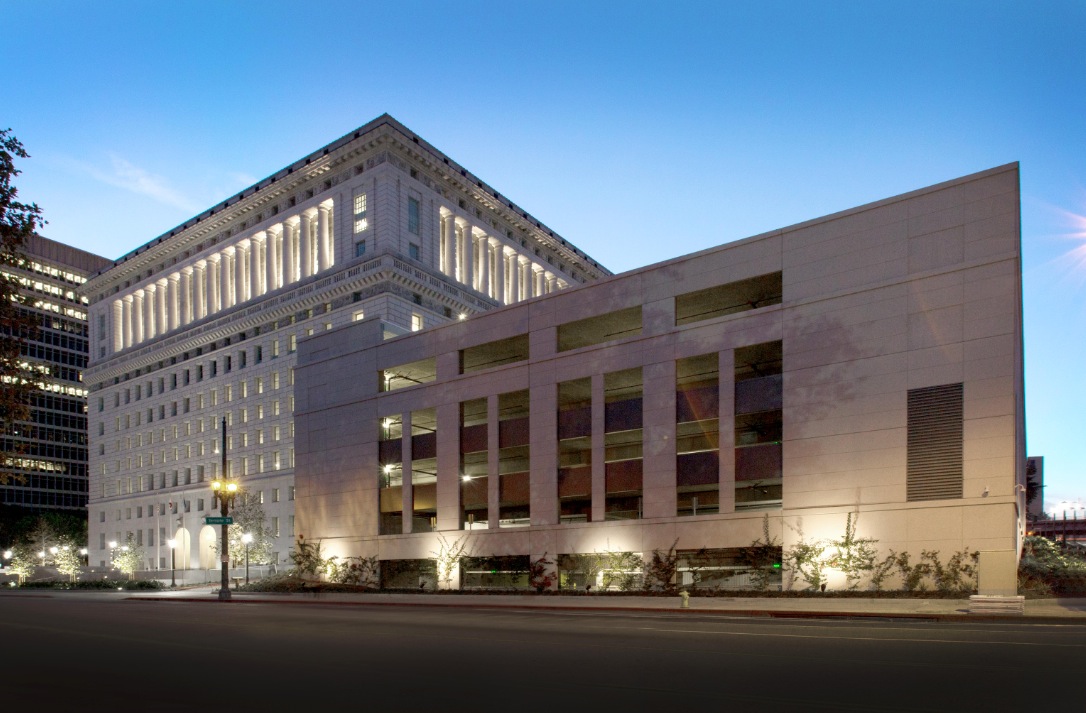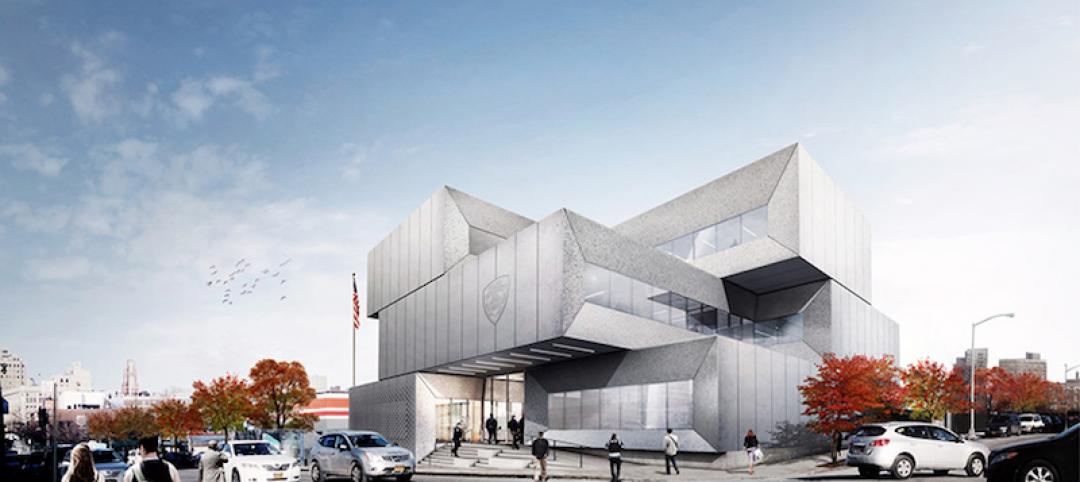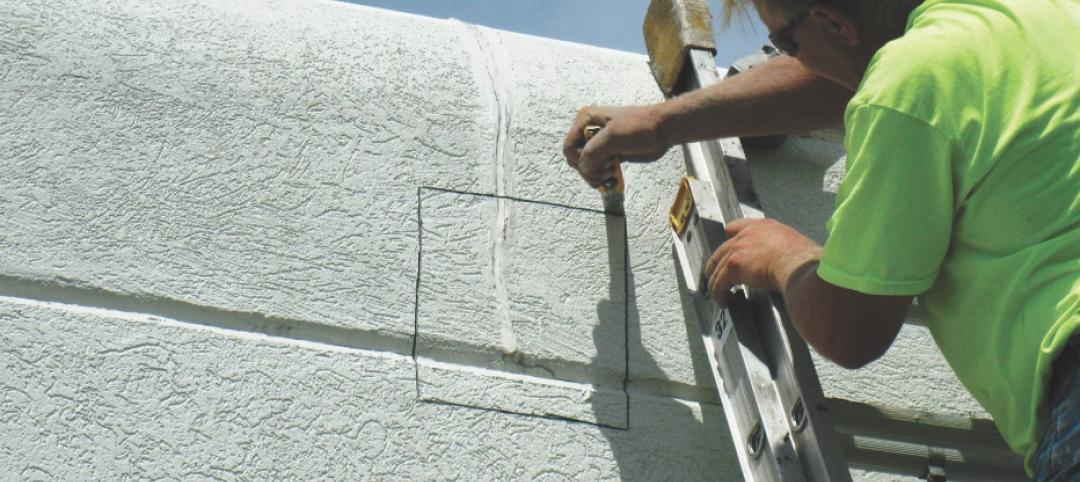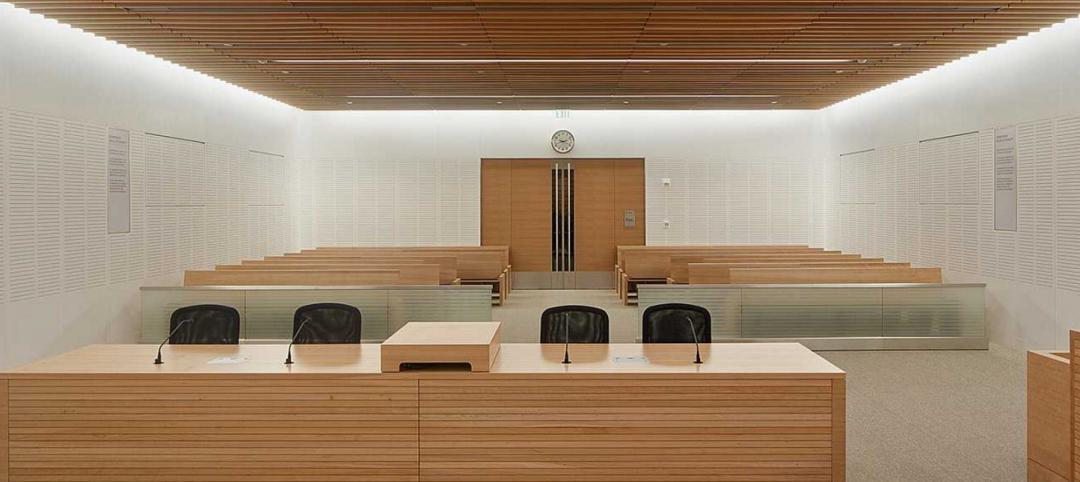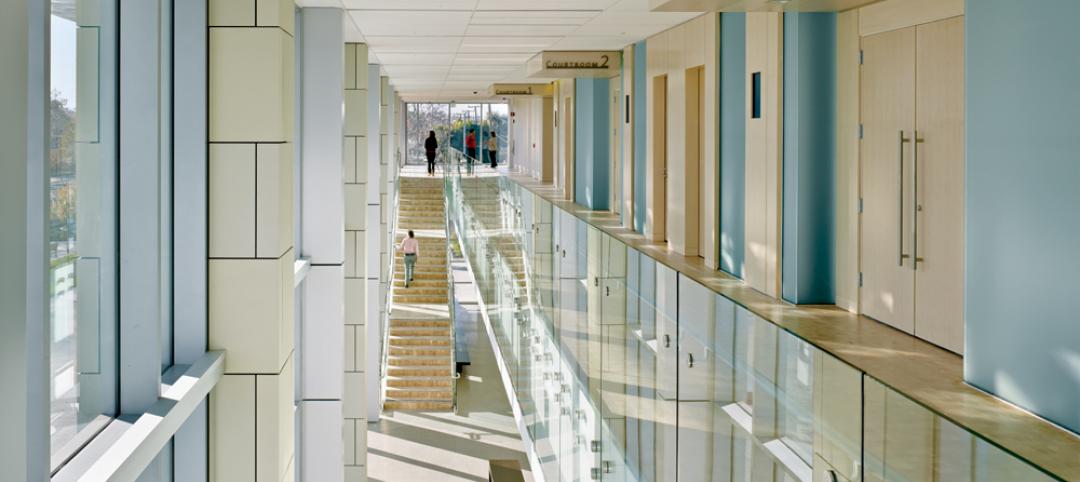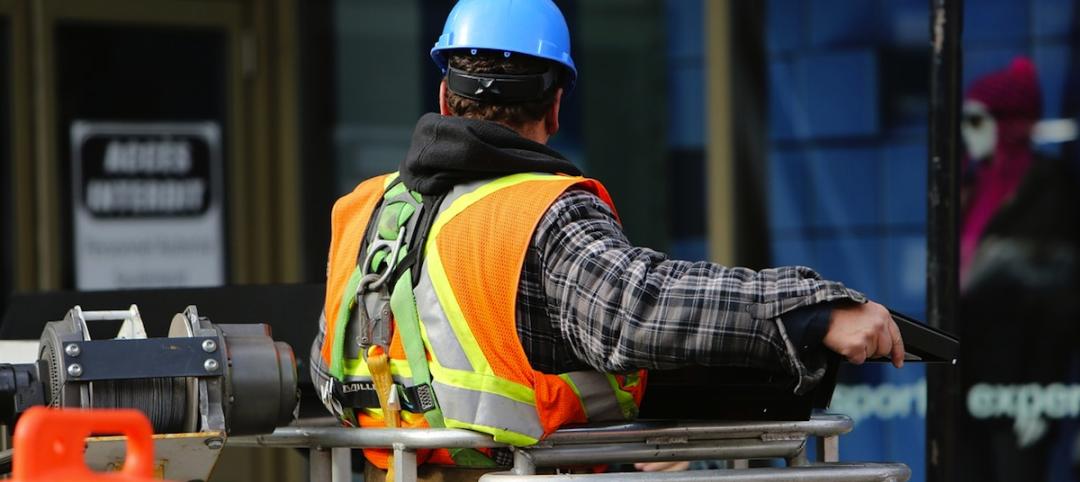The Hall of Justice in downtown Los Angeles, which opened in 1925, had a long and notorious history. Its courtrooms and jails hosted the likes of Charles Manson, Sirhan Sirhan, and Bugsy Siegel. The County Medical Examiner performed the autopsies on Marilyn Monroe and Robert F. Kennedy there.
GOLD AWARD
LOS ANGELES COUNTY HALL OF JUSTICE
Los Angeles, Calif.Building Team
Submitting firm: Clark Construction Group
(design-builder)
Owner: Los Angeles County Dept. of Public Works
Architect: AC Martin Partners
Historic architect: Levin & Associates
Mechanical Engineer: Simon Wong Associates
Electrical/plumbing engineer: Syska Hennessy Group
Conservator: Williams Conservation Arts
Envelope consultant: Wiss, Janney, Eltsner & AssociatesGeneral Information
Size: 335,000 sf
Construction cost: $175,054,100
Construction time: August 2011 to August 2014
Delivery method: Design-build
The 14-story Beaux Arts building stood out in L.A.’s skyline. But the Northridge earthquake, which rumbled through the city in 1994, rendered the Hall of Justice structurally unsound. For nearly 20 years, it sat unoccupied. Thanks to a fundraising drive spearheaded by former L.A. Sheriff Lee Baca, the building was revitalized through a restoration effort that, in the process of preserving its design elements and modernizing its facilities, proved to be a considerable engineering and construction feat.
The structural and seismic retrofit alone required the installation of concrete shear walls and drag beams on every elevation of every floor. Over 10 miles of #11 rebar were hand-installed. Two light courts were structurally reinforced from the interior with a system of strongbacks tied to the masonry with about 60,000 helical anchors. The building’s 11th and 13th floors were removed to allow for double-height spaces, which also enhanced the flow of natural light into a previously low-ceiling, dark former jail area.
Four ground-floor columns had to be taken out so a new media room would have unobstructed views. But the only way to get 40-foot-long support beams into the building was to hoist them by crane through second-story windows. The beams, which weighed more than 80,000 pounds, rested temporarily on the second floor with only a few load-bearing columns to prevent them from falling into the basement. The Building Team enlarged the existing spread footings and reinforced the existing columns from the basement to the second floor to support this load.
Seven months into construction the Building Team discovered that steel-frame members encapsulated in concrete fireproofing were coated with lead-based paint. To keep the project on track, the schedule was resequenced so that finishes proceeded from the top of the building once structural work was completed. This way, the team could concurrently execute the lead abatement and remove contaminants going down through the structure.
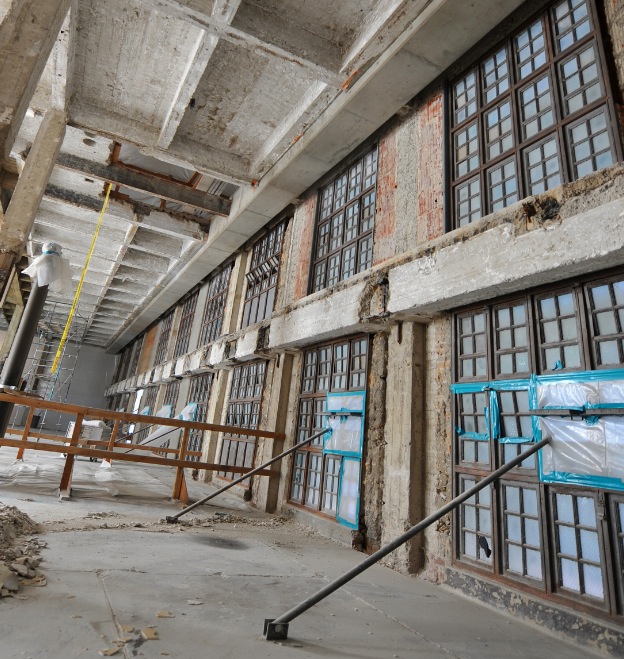 Removing the 11th and 13th floors allowed natural light to seep into previously low-ceiling jail cell areas. Photo: Victor Muschetto Photography.
Removing the 11th and 13th floors allowed natural light to seep into previously low-ceiling jail cell areas. Photo: Victor Muschetto Photography.
ATTENTION TO EVERY DETAIL
With this restoration, L.A. County’s Hall of Justice was welcome into the 21st century. Completely new MEP systems and lighting controls were installed. The Building Team tied a new elevator network with a destination dispatch interface into the building’s security system, which enable them to eliminate one of the seven elevators.
BIM was critical to meeting the schedule. Using as-built drawings from 1925 as the starting point, design-builder Clark Construction Group generated a model of the structure and supplemented that with field survey details. The as-built model included detailed modeling of the large existing trusses in the ceiling of the 12th floor, which held up the building’s roof where the main mechanical rooms were located.
The Building Team went to great lengths to maintain or restore the Hall of Justice’s original components.
Each of the building’s 1,600 windows was disassembled so that lead paint could be removed. Every single glazing stop screw in the windows was re-created to match the original. The hall’s four historic staircases, which weren’t code compliant, required variance approval to allow the features to remain true to their original character.
A resident conservator performed small-scale mockups, which the historic architect and envelope consultants used to produce a biddable set of specifications. This was particularly useful in maintaining quality control on the exterior cladding restoration.
The project team had access to working electronic files that included a historical database which hyperlinked catalogued photos of the building’s details to the construction plans for reference as questions arose. This helped the team’s efforts to reinstall historic materials as close to their original location as possible.
The project, designed to achieve LEED Silver certification, moved up to LEED Gold. The majority of its envelope was restored. More than 25,000 sf of interior stone was reused or reconfigured. Ninety-five percent of its 12,000 tons of construction waste was diverted from landfill.
Over the decades, the building’s ivory-colored granite had turned a dull gray. To restore the original color, the Building Team employed a micro-abrasive glass-bead blasting system. Clark also saved the owner $1 million when it determined that the building’s existing anchorage, which held the granite to the exterior, satisfied modern seismic requirements and need not be replaced.
This was the largest project that the county’s Department of Public Works had delivered.
The building, which houses the offices of the L.A. County Sheriff and District Attorney, reopened last October.
 3D modeling employed as-built drawings from 1925 as a starting point to restore the grandeur of the building’s interior. The Building Team also used small-scale mock ups of each piece of the building’s historic fabric. Photo: Victor Muschetto Photography.
3D modeling employed as-built drawings from 1925 as a starting point to restore the grandeur of the building’s interior. The Building Team also used small-scale mock ups of each piece of the building’s historic fabric. Photo: Victor Muschetto Photography.
Related Stories
Giants 400 | Aug 28, 2020
2020 Giants 400 Report: Ranking the nation's largest architecture, engineering, and construction firms
The 2020 Giants 400 Report features more than 130 rankings across 25 building sectors and specialty categories.
| May 24, 2018
Accelerate Live! talk: Security and the built environment: Insights from an embassy designer
In this 15-minute talk at BD+C’s Accelerate Live! conference (May 10, 2018, Chicago), embassy designer Tom Jacobs explores ways that provide the needed protection while keeping intact the representational and inspirational qualities of a design.
Government Buildings | Feb 4, 2016
Bronx police station design revealed by Bjarke Ingels Group
The blocky, modern design is meant to convey accessibility and public service.
| Jan 14, 2016
How to succeed with EIFS: exterior insulation and finish systems
This AIA CES Discovery course discusses the six elements of an EIFS wall assembly; common EIFS failures and how to prevent them; and EIFS and sustainability.
Justice Facilities | Nov 10, 2015
AIA: The year's best justice facilities
CO Architects, RMKM Architecture, and SOM are among the firms honored with 2015 Justice Facilities Review Awards from the AIA’s Academy of Architecture for Justice.
Justice Facilities | May 4, 2015
San Diego prison designed with rehabilitation in mind
Following the approach of detention centers in Austria and Norway, KMD and HMC Architects designed a prison rich with natural light and amenities.
Justice Facilities | Mar 5, 2015
New courthouse blossoms into a civic space for one California town
The building's canopy suggests classical courthouse features of front porch and portico. It also helps connect the building with a public plaza that has re-centered civic activity and public gathering for the town.
Justice Facilities | Mar 5, 2015
State of the state: How state governments are funding construction projects
State budget shortfalls are making new construction and renovation projects a tough sell, leading lawmakers to seek alternative funding for these jobs.
Codes and Standards | Mar 5, 2015
Construction problems at prison spur support to quash non-traditional project delivery in Iowa
Iowa lawmakers are investigating construction problems at the Fort Madison prison project and are scrutinizing rules regarding project delivery on state projects.
| Jan 2, 2015
Construction put in place enjoyed healthy gains in 2014
Construction consultant FMI foresees—with some caveats—continuing growth in the office, lodging, and manufacturing sectors. But funding uncertainties raise red flags in education and healthcare.


